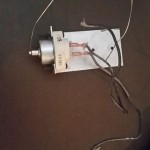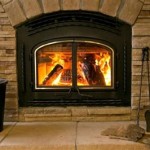How to Install Stone Veneer Brick Fireplace
Installing stone veneer brick on a fireplace can dramatically enhance its aesthetic appeal, transforming a dated or plain feature into a stunning focal point. This project, while achievable for a moderately skilled DIY enthusiast, requires careful planning, precise execution, and adherence to safety guidelines. This article provides a comprehensive guide on how to install stone veneer brick on your fireplace, covering everything from preparation to finishing touches.
Key Point 1: Preparation and Material Acquisition
The initial phase is critical and involves thorough preparation. This encompasses assessing the existing fireplace structure, selecting appropriate materials, and gathering the necessary tools. Neglecting this phase can result in issues later in the installation process.
First, evaluate the surface of the existing fireplace. Is it brick, drywall, concrete, or another material? The surface needs to be clean, structurally sound, and capable of supporting the additional weight of the stone veneer. Loose paint, crumbling mortar, or unstable drywall must be addressed before proceeding. Remove any existing paint or loose materials. If the existing surface is drywall, it may need to be reinforced with cement board to provide a stable and moisture-resistant substrate. Use cement board screws to securely fasten the cement board to the studs behind the drywall.
Next, determine the amount of stone veneer brick needed. Measure the height and width of the fireplace surface to be covered. Multiply these dimensions to calculate the total square footage. Add an extra 10% to account for cuts and waste. Stone veneer bricks come in various sizes, styles, and colors. Choose a type that complements your home's décor and adheres to local building codes. Natural stone veneer, while more expensive, offers a unique and authentic look. Manufactured stone veneer is a more budget-friendly alternative, offering a wide range of styles and colors.
In addition to the stone veneer, you will need the following materials:
*Mortar: Use a type specifically designed for stone veneer application. Read the manufacturer's instructions carefully regarding mixing ratios and curing times.
*Cement Board (if necessary): Provides a stable and moisture-resistant substrate for the stone veneer.
*Cement Board Screws: Used to securely fasten cement board to the existing structure.
*Metal Lath (optional, but recommended): Provides a better bond for the mortar, especially on smooth surfaces.
*Fasteners for Metal Lath: Nails or screws appropriate for the substrate.
*Sealer (optional): Protects the stone veneer from moisture and staining.
Gather the following tools:
*Mortar Mixer (optional, but recommended for larger projects): Makes mixing mortar easier and more consistent.
*Mixing Tubs: For mixing small batches of mortar.
*Grouting Bag or Hawk and Trowel: For applying mortar between the stones.
*Margin Trowel: For transferring mortar from the mixing tub to the trowel.
*Pointing Trowel: For shaping and smoothing the mortar joints.
*Rubber Mallet: For gently tapping stones into place.
*Level: To ensure that the stones are installed straight and level.
*Measuring Tape: For accurate measurements.
*Safety Glasses: To protect your eyes from mortar and dust.
*Work Gloves: To protect your hands.
*Dust Mask: To protect your lungs from dust.
*Angle Grinder with Diamond Blade: For cutting stones to fit.
*Chisel and Hammer: For shaping and trimming stones.
*Wire Brush: For cleaning mortar residue.
*Sponge: For cleaning excess mortar.
Key Point 2: Installation Process
With the surface prepared and materials gathered, the installation process can begin. This involves applying mortar, setting the stones, and ensuring proper alignment and spacing.
If using metal lath, attach it to the fireplace surface using appropriate fasteners. Overlap the edges of the lath by at least an inch. This will provide a strong bonding surface for the mortar.
Mix the mortar according to the manufacturer's instructions. Add water gradually until the mortar reaches a thick, workable consistency, similar to peanut butter. Avoid mixing the mortar too thin, as it will be difficult to work with and may not adhere properly.
Apply a scratch coat of mortar to the prepared surface, about 1/4 to 1/2 inch thick. Use the flat side of the trowel to spread the mortar evenly. Score the scratch coat with a notched trowel to create a rough surface that will improve adhesion for the stone veneer. Allow the scratch coat to dry for at least 24 hours before proceeding.
Begin installing the stone veneer from the bottom up. Apply a 1/2 to 3/4 inch layer of mortar to the back of each stone. Press the stone firmly against the prepared surface, wiggling it slightly to ensure good contact with the mortar. Maintain a consistent joint width between the stones, typically around 1/2 inch. You can use spacers to help maintain consistent joint widths. Use a level to ensure that the stones are installed straight and level. If necessary, use a rubber mallet to gently tap the stones into place.
Continue installing stones in rows, working your way up the fireplace. Stagger the joints between the stones for a more natural look. Use an angle grinder with a diamond blade or a chisel and hammer to cut stones to fit around corners or other obstructions. Wear safety glasses and a dust mask when cutting stones.
After the stones are set, allow the mortar to cure for at least 24 to 48 hours before grouting the joints. This allows the mortar to harden and prevents the stones from shifting during the grouting process.
Key Point 3: Grouting and Finishing
The final steps involve filling the joints between the stones with mortar (grouting) and cleaning up any excess mortar. Proper grouting enhances the aesthetic appeal and protects the stone veneer from moisture intrusion.
Mix the grout according to the manufacturer's instructions. The grout should be slightly thinner than the mortar used for setting the stones. Load the grout into a grout bag or use a hawk and trowel to apply the grout between the stones. Work the grout into the joints, ensuring that they are completely filled. Use a pointing trowel to shape and smooth the grout joints. There are several different joint styles you can choose from, such as concave, flush, or raked.
Allow the grout to set for about 30 to 60 minutes, or until it is firm but not completely hard. Use a damp sponge to wipe away excess grout from the face of the stones. Rinse the sponge frequently to avoid smearing the grout. Be careful not to remove too much grout from the joints.
After the grout has fully cured (typically 24 to 48 hours), use a dry wire brush to remove any remaining mortar residue from the stones. If necessary, use a diluted muriatic acid solution to remove stubborn mortar stains. Follow the manufacturer's instructions and wear appropriate safety gear when using muriatic acid.
Once the fireplace is thoroughly cleaned, consider applying a stone sealer to protect the stone veneer from moisture and staining. Choose a sealer that is specifically designed for use on stone veneer. Follow the manufacturer's instructions for application. A sealer is particularly important for fireplaces that are exposed to the elements or located in high-moisture environments.
Inspect the completed fireplace for any imperfections. Touch up any areas that need additional mortar or grout. Ensure that all stones are securely attached and that the grout joints are properly sealed. With proper installation and maintenance, your stone veneer brick fireplace will provide years of beauty and warmth to your home.

How To Install Thin Brick Veneers On Your Fireplace

Thin Stone Veneers Make A Fireplace Update Easy Swenson Granite 100 Natural Stones

How To Install Faux Stone Veneer Lowe S

Stone Veneer Over A Brick Fireplace Updates The Look

Fireplace Facelift Using Natural Stone Veneer

How To Install Thin Brick Veneers On Your Fireplace

Transform Your Home Stone Veneer Over Brick Fireplace Guide

Installing Stone Veneer Over A Brick Fireplace Grand River

Stone Veneer Over A Brick Fireplace Updates The Look

How To Cover A Brick Fireplace With Stone
Related Posts








